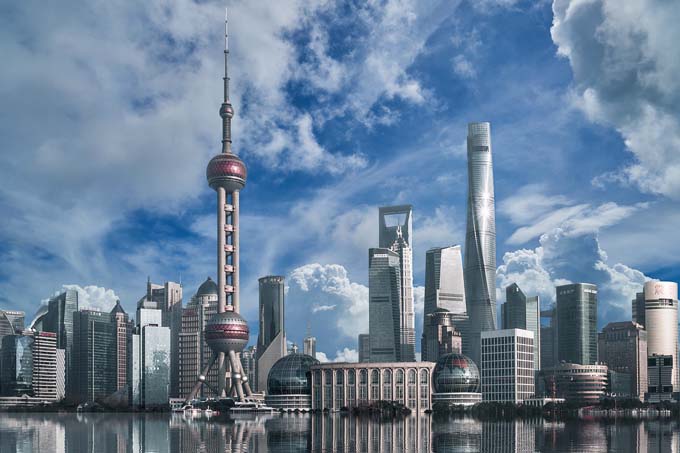China is being replaced as the world's workbench
China is transforming itself from the "workbench of the world" to an innovation economy. Global companies are striving to become less dependent on the People's Republic in their supply chains. At the same time, next-generation emerging markets are opening up to foreign direct investment. This is the view of James Johnstone, portfolio manager at investment manager Redwheel.

To effectively develop an urbanized workforce, a country must develop its internal resources and realize its long-term potential. This requires investment in manufacturing capacity to move the workforce away from its agrarian roots and toward a developed, salaried existence. Urbanization is driving consumption as local economies grow and consumers look to increase spending on real estate and durable goods such as cars and appliances. China is one of the most striking examples of this: The country's manufacturing capacity has grown exponentially over the past 25 years, creating enough jobs to move 750 million people out of poverty and into cities. Over the same period, its share of global production has risen from four percent in 2000 to an extraordinary 24 percent today (source: World Bank and United Nations statistics).
China passes the baton
China's economic success has meant that labor prices have risen significantly over time, and the country is no longer the cheapest manufacturing location on a global scale. Meanwhile, the imposition of trade tariffs has hurt China's competitiveness, and the pandemic has highlighted the problems that arise when supply chains are too concentrated in one location. As a result, the world is now beginning to move away from its dependence on China and establish new factories in other emerging markets. Many companies are looking for new economic areas where they can expand production centers for the next two decades. The countries most likely to benefit from this diversification are the next generation emerging markets, also known as frontier markets.
Frontier markets as new investment targets
These countries, which boast a favorable political environment, attractive demographics and good infrastructure, are considered attractive investment destinations. As a result, frontier markets in Southeast Asia have become popular alternatives for investments in the manufacturing sector, as have countries in Eastern Europe and North Africa - such as Romania and Morocco.
Importantly, it is not only Western companies that are following this trend. Investors in these new production sites are often Chinese companies, as they seek to remain cost competitive on the international stage and move up the economic value chain. For example, Chinese investment in Vietnam has increased significantly in recent years, and China is also one of the largest investors in Bangladesh's textile industry.
Follow the familiar path
Vietnam is an excellent example of an economy that is currently following the familiar path of manufacturing growth. Thanks to tax incentives, a cheap and young workforce, and an effective strategy to combat the pandemic, the country has attracted significant investment in labor-intensive manufacturing industries. Over the past decade, for example, electronics giant Samsung has shifted much of its manufacturing from South Korea and China to Vietnam. The company has invested nearly $20 billion in Vietnam and currently operates six factories and a research and development center there. Today, Vietnam accounts for nearly half of Samsung's global cell phone production, and Samsung in turn accounts for nearly one-fifth of Vietnam's total exports (source: Samsung Company Reports, Redwheel; as of: 03/31/2022).
Vietnam should have the potential to follow a similar path and repeat the success we saw in China 20 years ago. Participation in this long-term trend can be achieved through direct investment in infrastructure and manufacturing companies, for example, or indirectly through companies that benefit from rising consumption, financial inclusion and real estate development. Hoa Phat Group, for example, is the largest steel producer in Vietnam with a market share of 30 percent. The company has seen robust sales growth since it ramped up its Dung Quat expansion plant. This is now translating into increasing cash flow for the company. The company can be seen as a major beneficiary of continued foreign investment in production infrastructure (source: Hoa Phat Group Company Reports and Bloomberg; as of: 03/31/2022).
Another example of the ongoing shift of manufacturing to next-generation emerging economies can be found in automotive production: Romania, the Czech Republic and Morocco now produce more passenger cars than developed economies such as Italy. Companies such as Peugeot, Renault and Jaguar Land Rover have moved production to lower cost locations and we expect this trend to continue.
Chain reaction
Strong foreign investment in manufacturing has clear immediate benefits. They can set in motion a virtuous circle by improving the balance of trade and government finances, which in turn can stimulate further foreign investment and employment.
As workers receive higher wages and businesses increase profits, domestic consumption will increase, leading to greater use of financial products. These are very strong indirect benefits that multiply the economic value of each dollar from foreign investment.
This multiplier effect leads to broader investment opportunities within these economies. Vincom Retail, for example, is the largest developer of shopping centers in Vietnam and we believe the company is exceptionally well positioned to further benefit from rising incomes and exponential growth in consumer market penetration in the country.
Back to the future
The Asian "tiger economies" of Hong Kong, Singapore, South Korea and Thailand experienced rapid growth in the 1980s and 1990s as they developed outsourced manufacturing and increased employment. China then took the helm as the world's low-cost producer and underwent a similar industrial transformation, expanding its manufacturing capacity exponentially since the early 2000s.
For this reason, we call the development of a manufacturing economy and an urbanized workforce a well-trodden, familiar path. We have seen this before and we will see it again. As the world looks to diversify its supply chains not only in search of lower-cost manufacturing but also to reduce its dependence on China, frontier markets are in a good position to benefit.
Vietnam is at the forefront of this, but other Asian economies such as Bangladesh, Indonesia and the Philippines are also likely to be well positioned to continue attracting inward investment as they create a strong manufacturing base and further jobs. Countries such as Morocco, Kenya, Peru, Colombia, Romania and Hungary are similarly well positioned. The fact that many of these economies are little studied, often misunderstood, and ignored by many investors makes them even more attractive to us as long-term investors.
Author:
James Johnstone is portfolio manager Redwheel Next Generation Emerging Markets Equity fund. Redwheel is a specialized independent investment manager. The company was founded in 2000 with the aim of creating an environment in which fund managers can operate with a high degree of investment autonomy and maximize the benefits of their skills over the long term.









